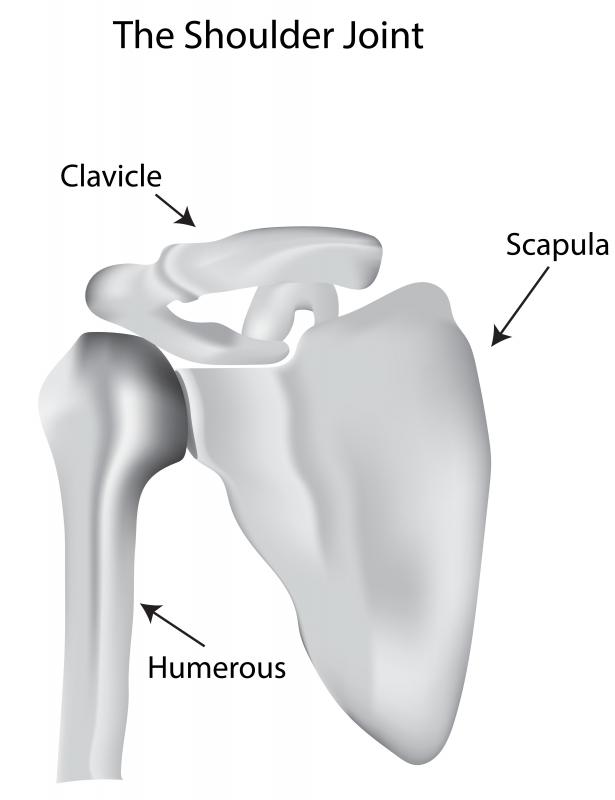At WiseGEEK, we're committed to delivering accurate, trustworthy information. Our expert-authored content is rigorously fact-checked and sourced from credible authorities. Discover how we uphold the highest standards in providing you with reliable knowledge.
What are the Best Exercises for the Rotator Cuff Muscles?
There are a number of reasons to consider exercises for the rotator cuff muscles, and there are a few rotator cuff exercises to choose from. The primary benefits of exercising the rotator cuff muscles is that they provide support and stability for the shoulder. They also can be important for someone who has had a shoulder injury such as a rotator cuff tear. The best exercises for the rotator cuff muscles involve using light weights to perform specific rotational movements with the arms in order to target these small muscles in the shoulders.
The rotator cuff muscles are a small set of four muscles within the shoulder. They help to protect and stabilize the shoulder's ball-and-socket joint. The muscles are so small that it usually is necessary to lift relatively small amounts of weight, especially the first time that an athlete performs these exercises. It also is important to stay within a comfortable range of motion, because any pain in the shoulder can indicate an unhealthy strain on the rotator cuff muscles. Making sure that the motions are slow and steady also is crucial.

Most of the exercises that provide a direct benefit to the rotator cuff muscles involve a rotation of the shoulder joint. One such exercise is an external rotator using the knee for support. This exercise requires an athlete to sit on a weight bench with one foot firmly on the ground. The other leg will be bent and the foot will be on the bench. The angle of the knee should be such that the athlete can rest his or her elbow on the knee while keeping the upper arm parallel to the floor.

The athlete's body should be facing the knee, and he or she should hold a light dumbbell. The athlete should bend the elbow at a 90 degree angle and rest the arm on the knee with both the upper arm and forearm parallel to the floor. The athlete then rotates the forearm upward to raise the dumbbell toward the ceiling until the forearms is perpendicular to the floor. The upper arm will have rotated but will remain parallel to the floor. The athlete then lowers the weight back to the original position to complete the exercise.

Another valuable exercise that benefits the rotator cuff muscles is called the propped external rotator. This exercise also requires the athlete to sit on a bench, but this time he or she will place both feet firmly on the floor. It is best to use a bench press bench, because the key to this exercise is to rest the upper arm on a barbell in the same way that the athlete placed the upper arm on the knee in the previous exercise. The motion of the dumbbell for this exercise is the same as for the external rotator knee, but the use of the barbell for support rather than the knee means that the upper arm extends to the side of the body rather than to the front. This shift provides a different workout for the rotator cuff muscles.

A final shoulder exercise that benefits the rotator cuffs is the side-lying external rotator. To perform this exercise, the athlete lies on his or her side with a rolled-up towel under the higher of the two elbows. The upper arm should be against the athlete's side, and the forearm will be straight out in front and parallel to the floor. Holding a light dumbbell, the athlete then rotates the forearm upward until the arm is perpendicular to the floor, then lowers it back to the starting position. The upper arm is next to the body in this exercise, so it works the rotator cuff muscles differently from the previous two exercises, even though the motion is once again very similar.
AS FEATURED ON:
AS FEATURED ON:
















Discuss this Article
Post your comments